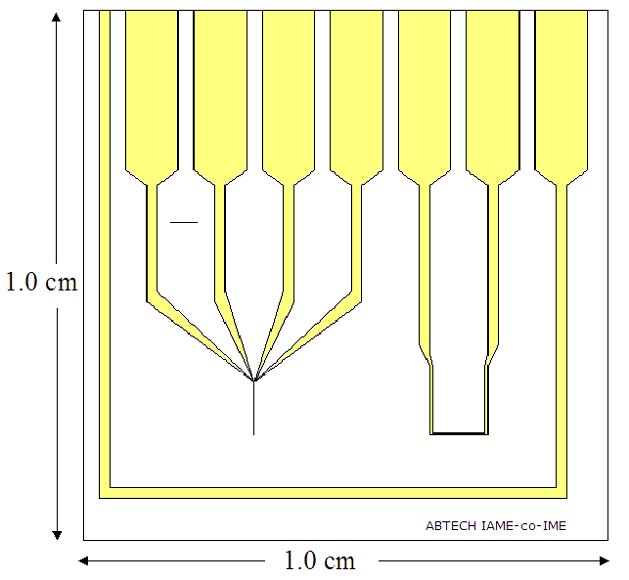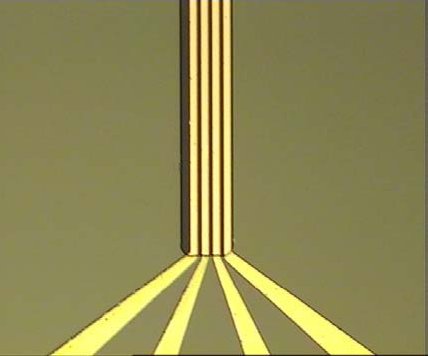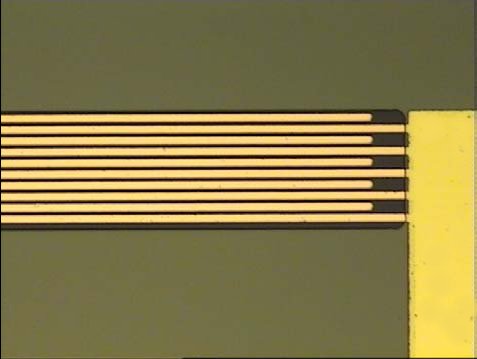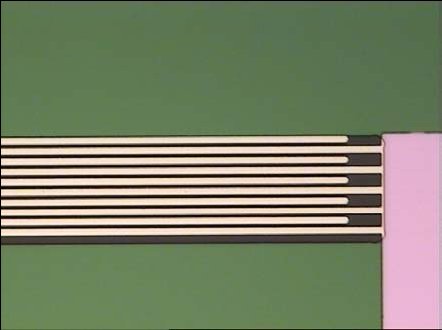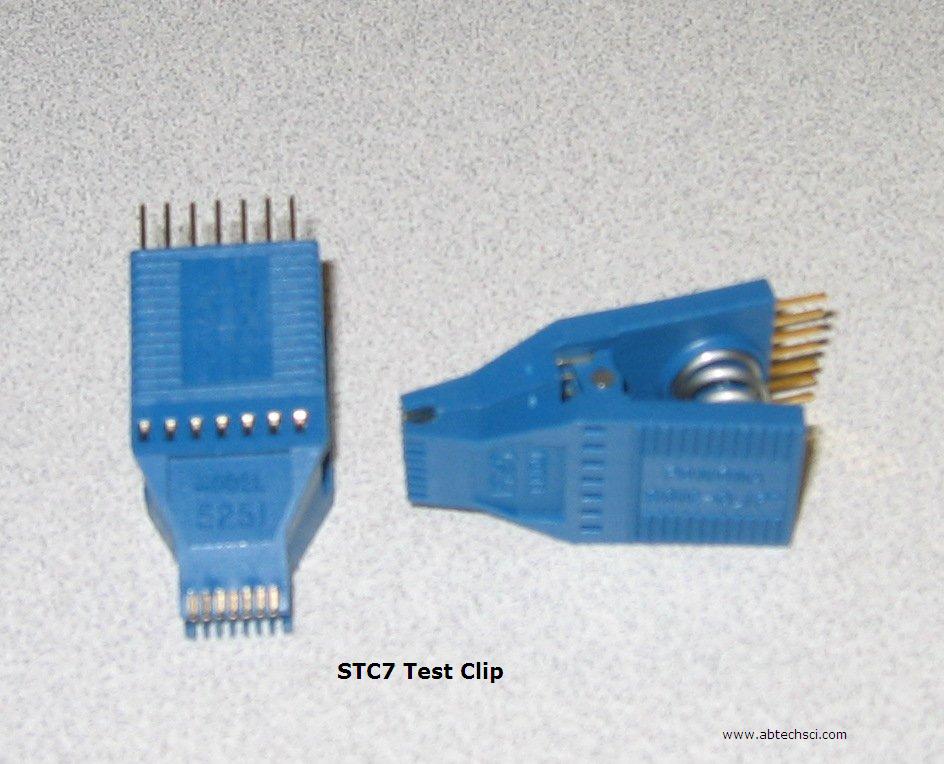 Introduction and Background
Introduction and Background
Ø
The Independently Addressable Microband Electrode
(IAME)-co-Interdigitated Microsensor Electrodes (IMEs) is
an inert, array microelectrode formed from patterned conductors
on an insulating substrate chip. These chips were designed for
the simultaneous interrogation of the electrical,
electrochemical, and optical properties of thin polymeric films
and coatings, for applications in microelectrochemistry, for
electrical/electrochemical impedance spectroscopy, and for
chemical and biological sensor development. With the IAME portion
obtain four-band conductivity measurements of polymer films,
carbon nanotubes, and self-assembled monolayers. With the IME
portion obtain AC Impedance Stereoscopy measurements of the same
material under the same test conditons. The key advantage; both measurements will be performed
on the same substrate chip, for the same material casting, and under the same test conditons.
Ø
Microfabricated from magnetron sputter-deposited gold
or e-gun vapor-deposited platinum, these devices are supplied in
one configuration that includes a four-electrode microband array
(IAME) and a monolithic (M) IME.
Ø
The IAME portion comprises four independently
addressable microbands. Each band is 1.0 mm long, 2.0 microns wide
and the 4 bands are each separated by 1.0 micron. The IME portion
comprise 5 fingers per bus. Each finger is 1.0 mm long, 2.0 microns
wide, and the 10 fingers are each separated by 1.0 micron.
Ø
In research and product development, these devices are
widely used for conductimetric, chemoresistive chemical and
biological sensors using electrically conducting
(electroconductive) polymers, for impedance sensors based on
Langmuir-Blodgett thin films, for studying environmental effects
on polymer thin films, and in modern micro-electrochemistry.
Ø
Investigate the chemoresistive responses of
transducer-active, polymeric films in the same electrode
configuration, the same test environment, and on the same sample
film. Develop these devices into products where the application
requires a compact, durable and versatile chemical or biological
chemoresistive or electroanalytical sensor of low cost.
Back
to Top
 Applications of IAME-co-IMEs
Applications of IAME-co-IMEs
Applications of IAME-co-IMEs
in research and product development include:
Ø
As conductimetric chemical sensors and biosensors
based on electroactive polymers. Such devices exploit the very
large change in electrical impedance that accompanies
oxidation/reduction of these polymer films. Films are conferred
with chemical and biological specificity through the use of
inorganic catalysts, organic binding compounds, and natural
biorecognition agents such as enzymes, antibodies and DNA.
Ø
For the study of electrical and electrochemical
impedance spectroscopy of organic thin films and coatings.
Ø
As a capacitance probe during the deposition and/or cure
of an organic thin film or polymer e.g. based on
Langmuir-Blodgett thin film deposition or cure of an epoxy.
Ø
In modern microelectrochemistry -- as generator and
collector electrodes in electrochemical amplification or in the
performance of electroanalysis in high impedance environments.
Ø
In conductimetry studies -- to determine the conductance
of low conductivity media and in conductimetric titrations.
Ø
In coatings research and development --for example, to
study the transport of water into and through a coating or to
study the physical aging of the polymer upon environmental
exposure or accelerated aging.
Back
to Top
 Technical Specifications
Technical Specifications |
|
Ø
Chip Substrate: |
Schott D263
Borosilicate Glass |
|
|
|
Dielectric
Constant, Epsilon(r) at 1 MHz |
6.7 |
|
Dielectric Loss
Angle, tan delta, at 1 MHz |
61 x 10-4 |
|
Electrical
Resistivity (50 Hz) (250 C) |
1.6 x 10^8 ohm cm |
|
Coefficient of
Linear Thermal Expansion, * 20-300 Deg C |
7.2 x 10^-6 K^-1 |
|
Refractive Index
at 20 C, ne ( Lambda = 546.1 nm) |
1.5249 |
|
Softening temperature |
570 C |
|
|
|
|
Ø
Metallization: |
100 Å
Ti|W / 1000 Å Au or Pt |
|
|
|
|
|
|
Ø
|
|
IAME 0104.1 |
|
IME 0105.1
|
|
|
Digit length, d,
(microns) |
999 |
|
|
No. of digits per sensor, N |
4 |
5 pairs
|
|
Digit Width, a,
(microns) |
2 |
2
|
|
Interdigit Space,
a, (microns) |
1 |
1
|
|
Spatial
Periodicity, lambda, (microns) |
3 |
6
|
|
Zaretsky Meander
Length, M, (cm) |
N.A, |
0.499
|
|
Center Line or
Serpentine Length (cm) |
N.A.
|
0.999
|
|
Cell Constant
(cm^-1) |
-
|
-
|
|
|
|
|
|
Ø
IAME-co-IME Chip Dimensions |
Un-packaged
Die |
|
|
(l x w x t) |
|
|
IAME-co-IME 2-1 Au |
1.00 x 1.00 x
0.05 cm |
|
|
IAME-co-IME 2-1 Pt |
1.00 x 1.00 x
0.05 cm |
|
|
|
|
|
Ø
Packaging |
|
|
|
|
No packaging
(mounting) available |
Back
to Index |
